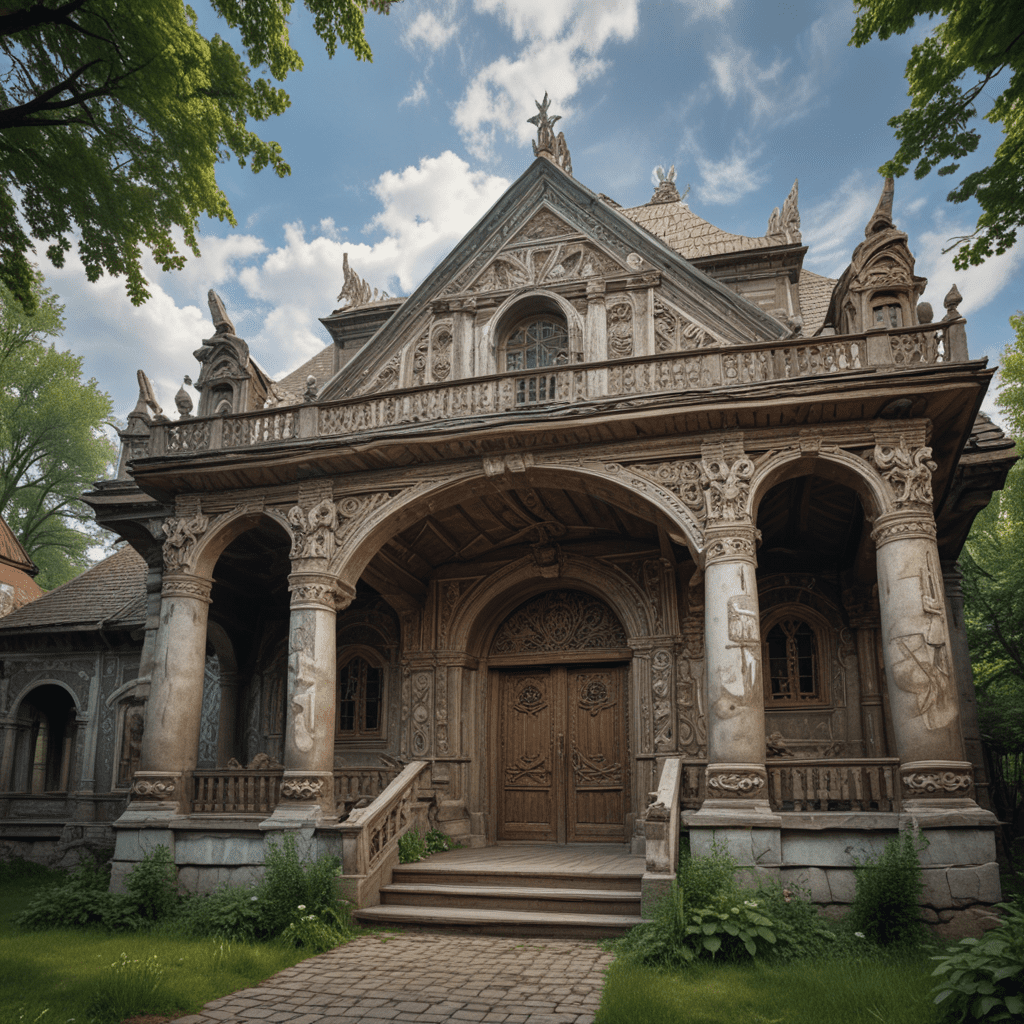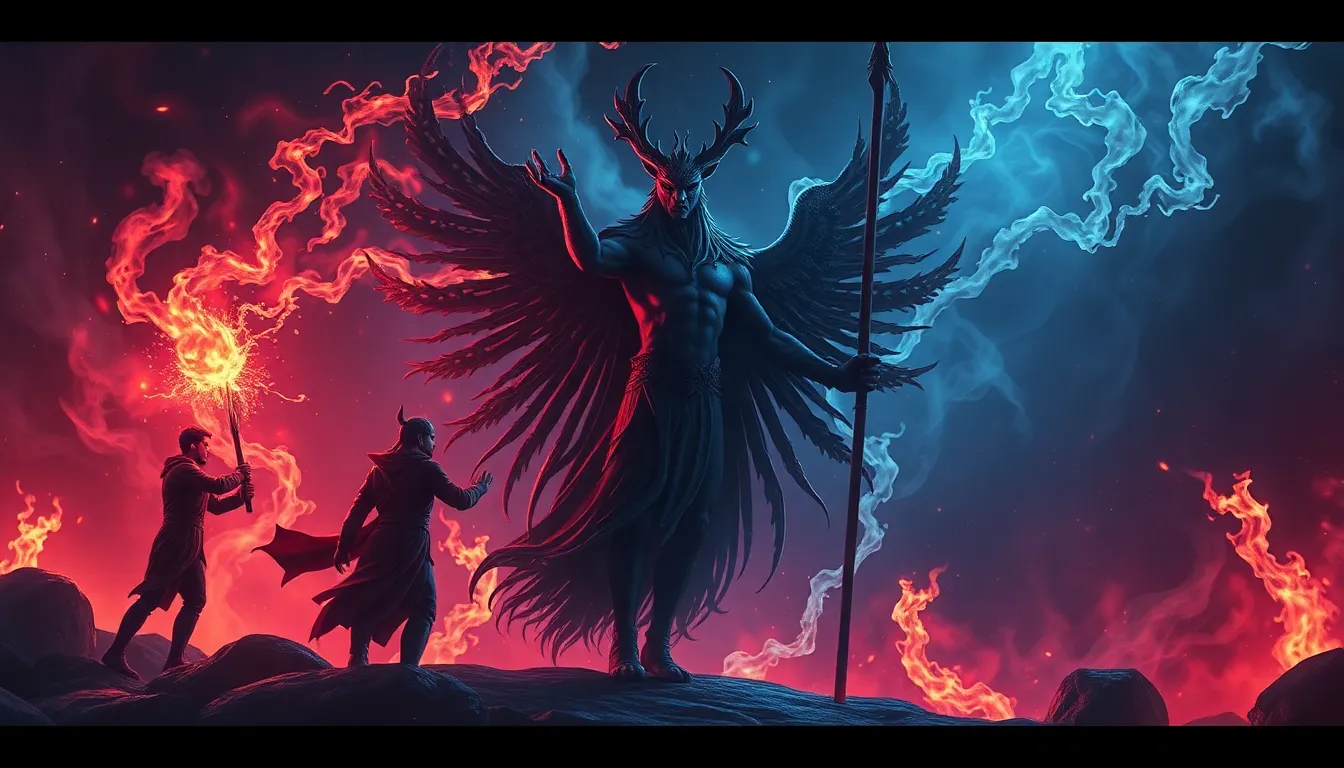1. Introduction
Slavic mythology, steeped in ancient beliefs and traditions, has profoundly influenced the cultural landscape of Slavic nations. Its rich tapestry of myths and legends has woven its way into various aspects of Slavic culture, including traditional architecture. This article delves into the intriguing connection between Slavic mythology and architecture, exploring how mythical beliefs and customs have shaped the design and symbolism of traditional Slavic structures.
2. Slavic Mythology and its Influence on Culture
Slavic mythology is an intricate system of beliefs and stories that originated among the Slavic peoples. It encompasses a vast pantheon of gods, spirits, and mythical creatures, each embodying unique powers and attributes. These mythological beings played a pivotal role in shaping Slavic worldview, influencing everything from religious practices to daily life.
3. Slavic Beliefs and Customs
Slavic mythology deeply intertwined with the everyday lives of the Slavic people. They believed in the interconnectedness of the natural and supernatural worlds, with spirits and deities dwelling in forests, rivers, and mountains. Their customs and rituals were often centered around appeasing these supernatural beings, seeking protection, and ensuring prosperity.
4. The Influence of Slavic Mythology on Traditional Architecture
The influence of Slavic mythology on traditional architecture is evident in various aspects of building design and construction. From the placement of dwellings to the intricate ornamentation, mythological beliefs and customs left an enduring mark on Slavic architecture.
5. Dwellings and Houses
Traditional Slavic dwellings, known as izbas, were often designed according to mythological principles. The placement of windows and doors was believed to protect against evil spirits, while the use of certain wood types was thought to enhance the home's energy and well-being.
6. Buildings of Worship
Religious beliefs had a significant impact on Slavic architecture, particularly on the design of buildings of worship. Temples and shrines were often constructed in sacred groves or near natural landmarks believed to be inhabited by spirits or deities. The architecture of these structures incorporated symbols and motifs from Slavic mythology, such as carvings of mythical creatures and representations of the gods.
7. Fortifications and Military Structures
Slavic mythology influenced the design and construction of fortifications and military structures. Fortified settlements, known as gorods, were built on elevated or defensible terrain and featured protective structures like wooden palisades, earthen ramparts, and watchtowers. These fortifications were often adorned with mythological symbols or representations of deities believed to provide protection against enemies.
8. Decorative Elements and Motifs
Traditional Slavic architecture is rich in decorative elements and motifs that draw inspiration from Slavic mythology. Wood carvings, paintings, and embroidery often depict mythological scenes, gods, spirits, and mythical creatures. These decorative elements not only beautified buildings but also served as amulets or talismans believed to protect against evil spirits and bring good fortune.
9. Preservation and Revitalization of Slavic Architectural Heritage
In recent years, there has been growing interest in preserving and revitalizing traditional Slavic architecture. Many governments and cultural organizations have implemented projects to restore and renovate historical buildings, while architects and designers are incorporating traditional elements and motifs into contemporary structures. This revival helps preserve the cultural heritage of Slavic nations and promotes a renewed appreciation for the artistry and symbolism of traditional architecture.
10. Conclusion
The influence of Slavic mythology on traditional architecture is a testament to the enduring power of myths and legends in shaping human society. From the layout of dwellings to the ornamentation of buildings, Slavic mythology has left an indelible mark on the architectural landscape of Slavic nations. By understanding the mythological symbolism and beliefs embedded in these structures, we gain deeper insight into the cultural heritage and worldview of the Slavic people.
FAQ
Q: What is the significance of the number three in Slavic mythology?
A: The number three holds great importance in Slavic mythology, as it represents the unity of the past, present, and future, as well as the harmony between the natural, human, and spiritual realms.
Q: What is the role of the домовой (house spirit) in Slavic mythology?
A: The домовой is a benevolent spirit that resides in the hearth of a house and protects the family from evil spirits. Offerings and prayers were often made to the домовой to ensure good fortune and well-being.
Q: How does Slavic mythology influence modern architecture?
A: While traditional Slavic architecture is preserved in museums and historical sites, modern architects and designers often draw inspiration from its symbolism and motifs. Contemporary buildings may incorporate elements like natural materials, geometric patterns, and mythological representations to connect with the cultural heritage of the Slavic people.



